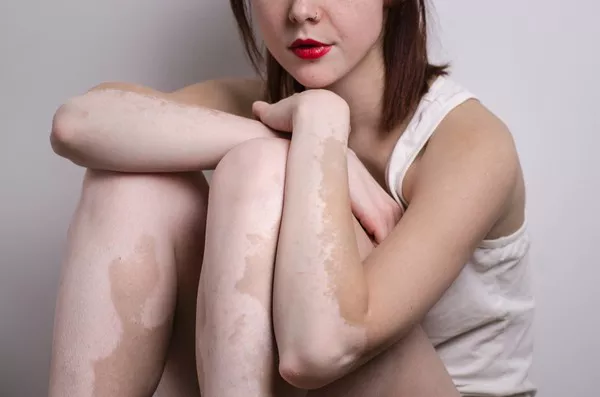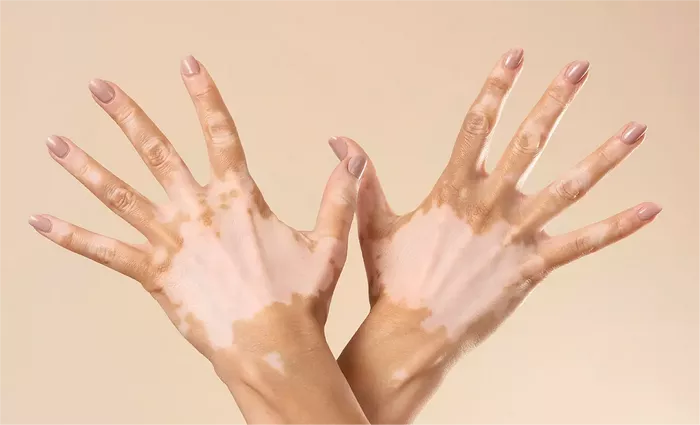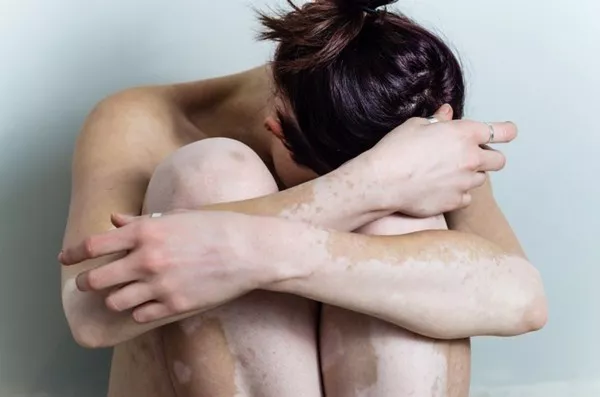Skin discoloration can be a concern for many individuals. When the skin turns white, it can be due to various reasons, including health conditions, environmental factors, and genetic influences. This article explores the different causes of skin whitening, their symptoms, and potential treatments.
Understanding Skin Color
Skin color is determined by the amount and type of melanin produced by specialized cells called melanocytes. Melanin comes in different forms: eumelanin (brown or black) and pheomelanin (red or yellow). The balance between these types of melanin gives each person their unique skin tone.
Common Causes of Skin Turning White
1. Vitiligo
What is Vitiligo?
Vitiligo is a skin condition that causes loss of pigment in patches on the skin. This occurs when melanocytes die or are unable to function.
Symptoms
- White patches on various body parts, including the face, hands, and around the mouth.
- Patches may become more noticeable after sun exposure.
Treatment Options
- Topical corticosteroids: To reduce inflammation and restore skin color.
- Phototherapy: Using UV light to stimulate melanocyte activity.
- Skin grafting: In severe cases, transferring skin from areas with normal pigmentation.
2. Albinism
What is Albinism?
Albinism is a genetic disorder characterized by a lack of melanin production. Individuals with albinism have very light skin, hair, and eyes.
Symptoms
- Extremely light or white skin and hair.
- Vision problems, such as sensitivity to light and poor eyesight.
Treatment Options
- There is no cure, but management includes using sunscreen to protect the skin and sunglasses to protect the eyes.
3. Tinea Versicolor
What is Tinea Versicolor?
Tinea versicolor is a fungal infection that affects the skin’s pigmentation. It leads to lighter or darker patches of skin, usually on the back, chest, and arms.
Symptoms
- Patches of skin that may be lighter than the surrounding areas, especially in warm weather.
- Itching or irritation in some cases.
Treatment Options
- Antifungal creams: To treat the fungal infection.
- Oral antifungal medications: For more extensive cases.
- Selenium sulfide shampoo: Can be used as a body wash to reduce recurrence.
4. Pityriasis Alba
What is Pityriasis Alba?
Pityriasis alba is a common skin condition seen mostly in children. It results in pale patches on the face and arms.
Symptoms
- Light-colored patches that may be slightly scaly.
- Often more noticeable after sun exposure.
Treatment Options
- Moisturizers: To help with dryness.
- Topical corticosteroids: In severe cases to reduce inflammation.
5. Post-Inflammatory Hypopigmentation
What is Post-Inflammatory Hypopigmentation?
This condition occurs after the skin has been injured or inflamed. It leads to lighter areas where the skin has healed.
Symptoms
- Lighter patches on the skin following injury, burns, or conditions like eczema.
- Usually occurs in the same location as the previous skin trauma.
Treatment Options
- Avoid further irritation: Protecting the area from sun exposure.
- Topical treatments: Such as corticosteroids or retinoids may help restore color over time.
6. Sun Damage
How Does Sun Damage Affect Skin Color?
Excessive sun exposure can damage the skin and lead to various pigmentation issues. This can sometimes cause patches of lighter skin.
Symptoms
- Sunspots, age spots, and discoloration.
- Skin may appear leathery or rough.
Treatment Options
- Sunscreen: To prevent further damage.
- Chemical peels or laser therapy: To improve skin appearance.
Rare Conditions Causing Skin to Turn White
7. Leukoderma
What is Leukoderma?
Leukoderma refers to a loss of skin pigmentation, similar to vitiligo but can occur due to other factors, such as chemical exposure or certain medications.
Symptoms
- Patches of white skin that can develop over time.
Treatment Options
- Depends on the underlying cause, including stopping any offending medications or treatments.
8. Chemical Exposure
How Can Chemicals Affect Skin Color?
Exposure to certain chemicals, such as hydroquinone (used in skin-lightening products), can lead to skin lightening and irritation.
Symptoms
- Lightened patches where the product was applied.
- Possible skin irritation or dermatitis.
Treatment Options
- Discontinue use: Stop using the offending product.
- Seek medical advice: For treatment of any skin irritation.
Lifestyle Factors Affecting Skin Color
9. Nutrition
How Does Nutrition Influence Skin Health?
A lack of essential nutrients can affect skin health, including pigmentation. For example, deficiencies in vitamins A, C, and E may lead to skin issues.
Symptoms
- Dull-looking skin.
- Increased dryness and uneven texture.
Treatment Options
- Balanced diet: Ensure adequate intake of vitamins and minerals.
- Hydration: Drinking enough water helps maintain skin health.
10. Hormonal Changes
How Do Hormones Affect Skin Color?
Hormonal changes, such as those during pregnancy or menopause, can lead to changes in skin pigmentation. This can include areas of hypopigmentation.
Symptoms
- Changes in skin tone during specific life stages.
Treatment Options
- Monitoring: Changes often resolve on their own post-hormonal fluctuations.
- Consult a dermatologist: For any persistent changes.
Conclusion
Skin turning white can result from various factors, including medical conditions, genetic factors, and lifestyle choices. Understanding the underlying cause is crucial for effective treatment and management. If you notice any changes in your skin color, especially if accompanied by other symptoms, it’s important to consult a healthcare professional. Early diagnosis and treatment can help manage the condition and improve skin appearance. Remember, maintaining a healthy lifestyle, protecting your skin from sun damage, and seeking appropriate medical advice can go a long way in preserving your skin’s health.
Related topics:

























